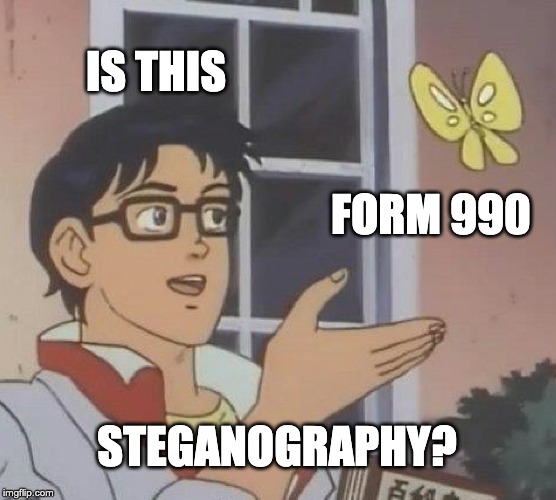This is the first of a three-part series on how to read IRS Form 990. Read Part 2 and Part 3.
IRS Form 990 is a goldmine of financial information about non-profit organizations earning more than $200,000 annually. (Other variants, such as the 990-EZ and 990-N, are filed by nonprofits earning less, while private foundations file the Form 990-PF.)
Form 990s require additional reporting—they aren’t always accurate and are typically a couple of years old and should be read through that lens. That said, they contain a lot of information and provide a useful starting point for backgrounding a non-profit.
It’s not hard to find. Nonprofits are legally required to provide the last three years of 990s upon request. Many can also be found on GuideStar, Charity Navigator, ProPublica’s Nonprofit Explorer, 990 Finder, or the nonprofits’ own websites. But if you don’t know what to look for, you might find yourself paging through these forms while missing potential stories.

Here’s a breakdown of what to look for and what you’ll find.
The form starts with the fiscal year and indicates the type of return, as well as the website and year of formation.
Part 1 includes Activities & Governance includes overview information: the type of non-profit, its mission, how many employees and volunteers it has.
Next, there are sections on Revenue and Expenses (lines 8 through 19). Nonprofits make their money through contributions and grants, program service revenue, investments, and a catch-all “other” category. You can compare the current year to the prior year to see if there have been big changes. Expenses show how the money was spent, including giving out grants, member benefits, salaries and employee benefits, fundraising fees and other expenses. It ends with the revenue minus expenses.
Finally, Part 1 ends with Net Assets or Fund Balances, so you can see which direction they’re moving.
Part 2 is the Signature Block. (Not much to see here.)
Part 3 is the Statement of Program Service Accomplishments, which includes information on new services, whether there were significant changes on current services (which will be described in an additional Section O filing), and achievements for the three largest program services by expenses.
Part 4 is a Checklist of Required Schedules. This includes required additional schedules that need to be filed if there is a “yes” answer, which is worth looking up when backgrounding these organizations.
It includes questions about political campaign activities (3), lobbying activities (4), payments over $15,000 for professional fundraising services (17), money grossed from gaming activities (19), and more.
Two interesting questions include Line 25b, which asks whether the organization is aware it engaged an excess benefit transaction with a disqualified person (making a large payment to an insider), and 26 asks whether a loan to or by a current or former officer, director, trustee, key employee, highly compensated employee or disqualified person was outstanding by the end of the year.
Part 5 includes Statements Regarding Other IRS Filings and Tax Compliance. It asks about financial accounts in foreign countries, whether organizations were a party to prohibited tax shelter transactions, and whether it solicited contributions that were not tax-deductible and if so, whether they were aware of this. There are a few other interesting questions about, say, payments for indoor tanning services.
Part 6 is about Governance, Management and Disclosure. It’ll tell you the number of voting members of the organization, whether there were family or business relationships between staffers, and about “significant diversions of the organization’s assets” (also known as embezzlements).
Under “Policies,” you’ll learn whether board members are given copies of the 990, and the process (if any) to review it.
Question 12a also asks if there is a written conflict of interest policy, which is good background for many stories. (Some nonprofits file Section O to describe their monitoring and enforcement of that policy.)
Other lines pertain to written whistleblower policies, written document retention and destruction policies, as well as whether there are independent reviews of the CEO/executive director/top management official’s pay, and that of other officers or key employees.
It also includes a question on whether the organization participated or invested in joint ventures, and whether there’s a written policy or procedure requiring it to evaluate the participation with respect to following federal tax law and maintaining its exempt status.
Finally, this part ends with a list of states that require a copy of this form filed with them. Although it’s not at all comprehensive, this can give you information on other states in which the organization is active
To practice, pull three Form 990s for organizations you’re familiar with and, using this guide, see what you find. You can also reverse engineer business news stories to see if any of the information discussed was in this form. Happy hunting!
Check out the second part of this post to learn how to read Part 7 through 12 of IRS Form 990.










